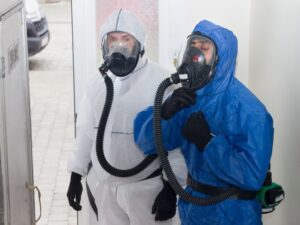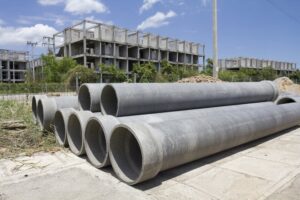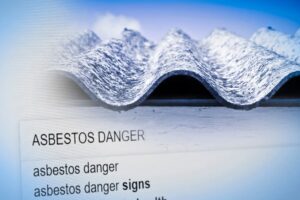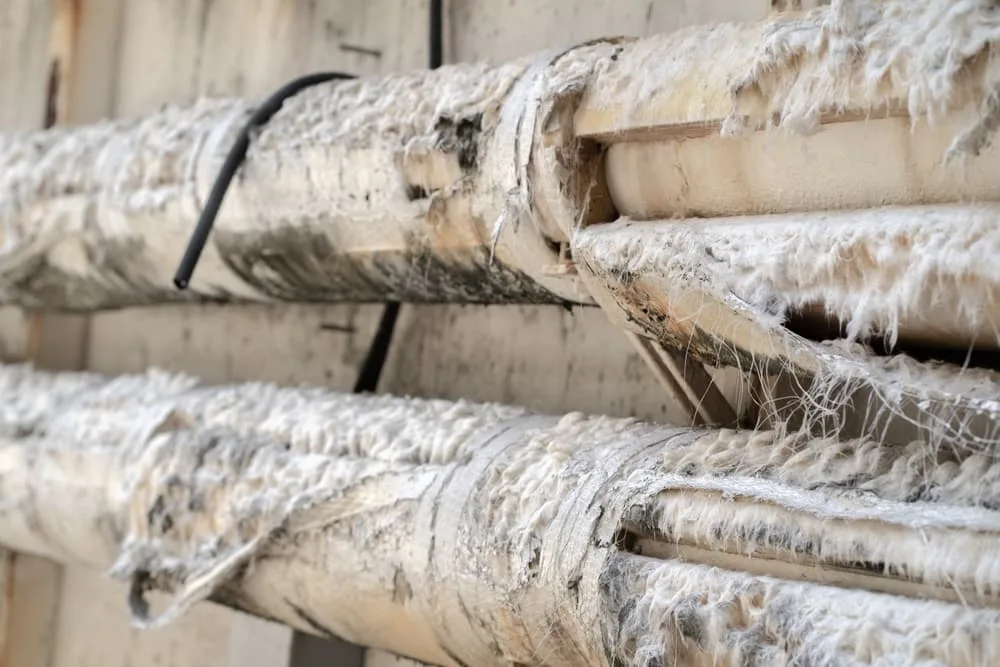The work of an asbestos attorney is never done, given that asbestos was used extensively in building materials until the 1980s, and it’s still imported from overseas.
So, why haven’t the dangers of the naturally occurring mineral been fully recognized? The reasons are complex, as asbestos has also triggered serious health issues that have forced companies to go bankrupt as well.
As a result, asbestos has not been completely banned in the United States due to various historical, legal, and economic factors—factors that have complicated the legal landscape over time.
- Limited ban: While some forms of asbestos are banned, the ban is not comprehensive. 1989, the EPA attempted to issue a full ban, but the court reversed this decision in 1991.
On July 12, 1989, the EPA pronounced a full ban under Section Six of the Toxic Substances Control Act or TSCA, banning most products containing asbestos in the U.S. However, in 1991, the rule was vacated and remanded to the Fifth Circuit Court of Appeals, overturning the final ruling from 1989.
- Legal challenges: Some officials in the asbestos industry successfully challenged the EPA’s authority to implement a complete ban, arguing that the agency hadn’t fully considered less burdensome alternatives.
- Economic considerations: Some industries have argued that asbestos is still necessary for certain applications where suitable alternatives are unavailable or are significantly more expensive.
- Existing regulations: Proponents of the current approach toward a ban argue that existing regulations sufficiently control the risks related to asbestos use.
- Political influence: The asbestos industry has historically had significant lobbying power, influencing policy decisions.
- Ongoing debate: Moreover, the discussion continues about the necessity of a full ban, with people against a full ban again arguing that current regulations are enough while others are pushing for stricter measures.
It’s worth noting that many other countries have implemented more comprehensive asbestos bans. The situation in the U.S. remains a topic of ongoing debate.
Current Proposals and Rulings (2022 and 2024)

In April 2022, the EPA proposed a ban on the continued use of asbestos to protect workers with restrictions placed on importation.
The ban resulted from a chrysotile asbestos risk evaluation in December 2020.
The proposed rule prohibited the making, importing, processing, and distributing of chrysotile asbestos and covered the risk management rule under section 6(a) of the TSCA.
Recent Update
As of March 18, 2024, the Biden administration finalized the rule to ban chrysotile asbestos. However, the ban permits a phase-out period of 12 years and does not explicitly ban all asbestos types. Nevertheless, legislation advocates believe it’s a major indicator of an improvement to the ruling of the recent past.
Chrysotile asbestos is mainly imported into the U.S. for use in the chloralkali industry. According to the International Trade Commission (ITC), almost 115 metric tons of asbestos were imported in the first quarter of 2022. This surpasses the 100 metric tons brought into the country in 2021. While importing the mineral is continuing, it has not been mined in the U.S. since 2002.
The Historical Consequences of Using Asbestos
Asbestos, a naturally occurring mineral, has been used for thousands of years due to its heat-resistant properties. However, its widespread industrial use began in the late 19th century. In the United States, asbestos became increasingly popular during the Industrial Revolution and peaked in the late 20th century (1970s).
Some of the key applications for fire-resistant and insulating material include:
- Building materials, including insulation, roofing, and flooring
- Automotive components, such as clutches, pads, and brakes
- Shipbuilding products, including fireproofing and insulation
- Industrial processes
- Textiles (or fire-resistant clothes)
In the 1920s, doctors started observing a higher incidence of lung disease among workers exposed to asbestos. However, asbestos company executives continued to conceal the dangers of using asbestos for many years until it became widely recognized as a known carcinogen.
Health Risks and Scientific Evidence

The health risks linked to asbestos exposure are now fully documented. Exposure to the mineral can lead to:
- Asbestosis: A chronic lung disease characterized by scarring of lung tissue
- Lung cancer: Asbestos exposure significantly increases the risk of lung cancer, especially in smokers
- Mesothelioma: A rare and aggressive cancer that affects the lining of the lungs, heart, and abdomen
- Other cancers: There’s evidence linking asbestos exposure to cancers of the larynx, ovaries, and other organs
Why Asbestos is So Dangerous
The danger of asbestos lies in the physical structure of its microscopic fibers. Asbestos can break down into fibers that can become airborne and easily inhaled when disturbed. These fibers can remain in the body for long periods, causing inflammation and cellular damage over the years.
Therefore, the devastating health effects of asbestos exposure often take decades to manifest. This fact partly explains why the use of asbestos has continued despite early warning signs.
Early Regulatory Attempts on Asbestos Bans
As the scientific evidence of asbestos’s health risks mounted in the 1970s, regulatory bodies began to take action. Some major milestones include the following:
1971: The Occupational Safety and Health Administration (OSHA) issues its first regulation for asbestos in the workplace.
1973: The EPA bans spray-applicator asbestos materials for fireproofing and insulation purposes.
1975: The EPA bans the installation of asbestos pipe insulation and block insulation of facility parts and components for water heaters and boilers.
1977: Asbestos authorities prohibited its use in wall patching products and manufactured fireplace embers.
1978: The EPA bans spray-applied surfacing asbestos-containing materials for reasons not banned previously.
While the early regulations were important, they did not create a comprehensive ban on asbestos use.
More About The 1989 Asbestos Ban and Phase-Out Rule
In 1989, the EPA took its most significant action against asbestos use. Under the authority of the Toxic Substances Control Act (TSCA), the agency issued the Asbestos Ban and Phase-Out Rule. This rule aimed to stop the making, importing, processing, and distributing of asbestos-containing products in the U.S. in three stages – over seven years.
The EPA based this decision on a decade of research and a 100,000-page administrative record. The agency concluded that asbestos posed an unreasonable risk to human health and that a ban was the least burdensome and sensible way to address exposure risk.
A Glitch in the Ruling: The Corrosion Proof Fittings v. EPA Court Case

Unfortunately, the 1989 ban was short-lived. In 1991, the asbestos industry, led by Corrosion Proof Fittings (a company that manufactured asbestos-made pipes), challenged the EPA’s ban in court. The case, Corrosion Proof Fittings v. EPA, was heard in the Fifth Circuit Court of Appeals.
In a decision that will have far-reaching consequences, the court overturned most of the EPA’s ban. The court reasoned that –
- The EPA had failed to demonstrate that a ban was the “least burdensome alternative” for controlling the risk of asbestos, as required by TSCA.
- The agency hadn’t adequately considered regulatory alternatives to a ban.
- The EPA’s cost-benefit analysis was flawed, according to the court.
This ruling significantly weakened the EPA’s ability to regulate asbestos and set a precedent that made it more difficult for the agency to ban other harmful substances under TSCA.
Current Regulatory Uses of Asbestos (July 8, 2024)
Following the court decision in the Collisions Proof fittings case, the regulatory landscape for asbestos in the U.S. became more complicated, if not confusing. While some bans remained in place, many uses of asbestos continued to be legal. As of now (July 8, 2024), asbestos is banned from use, for example, in corrugated papers, commercial papers, specialty papers, felt for floors, or any new uses for asbestos.
However, asbestos may still be used and found in brake blocks, sheet gaskets (used in industry), aftermarket auto brakes and linings, vehicle friction products, and non-roof and roof coatings. While use is allowed in these applications, the product’s inclusion is still subject to certain safety standards and regulations.
Economic and Industry Considerations
One of the main arguments against a comprehensive asbestos ban is economic. Some industries claim that alternatives to asbestos are either not available or significantly more expensive for certain applications. For example, some manufacturers of vehicle friction products argue that asbestos provides unique performance characteristics.
These economic considerations, combined with the lobbying power of certain industries, have played a primary role in shaping asbestos policy in the U.S.
An Overview of Recent Developments and Ongoing Debates
Despite the challenges posed by the Corrosion Proof Fittings decision, efforts to strengthen asbestos regulations have continued:
2016: The Frank R. Lautenberg Chemical Safety for the 21st Century Act amended the TSCA, giving the EPA new authority to evaluate and regulate chemicals.
2019: The EPA issued a final rule ensuring discontinued asbestos products cannot reenter commerce without evaluation.
2022: As mentioned, the EPA proposed a rule to ban chrysotile asbestos, the most common form still in use in the U.S. This proposed rule bans chrysotile asbestos use in chlor-alkali production, gaskets, brake blocks, aftermarket automotive brakes/linings, and other vehicle friction products.
2024: A ban on chrysotile asbestos was passed, with a phase-out rule implemented for 12 years.
Proponents and Opponents

Proponents of stricter regulations, including asbestos lawyers, argue that:
- Any level of asbestos exposure is potentially dangerous.
- Suitable alternatives exist for all current asbestos applications.
- The societal costs of asbestos-related diseases far outweigh any economic benefits of continued use.
On the other hand, those opposing further restrictions contend that:
- Current regulations adequately control the risks.
- Certain industries still rely on asbestos for critical applications.
- A ban can lead to job losses and economic disruption in affected industries.
Contact an Asbestos Lawyer if You’ve Been Diagnosed with an Asbestos-Related Disease
You need a strong legal advocate on your side if you wish to file an asbestos-related lawsuit. At Vogelzang Law an asbestos attorney can ensure you receive maximum compensation while preserving your rights. Don’t leave anything to chance. Contact an asbestos lawyer now for a free consultation and case review.



